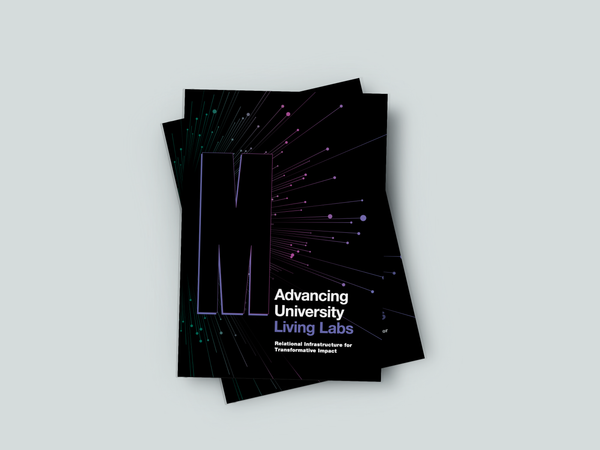Nature-based Solutions - a 2022 scan
The promise of Nature-based Solutions are to address dual crises of climate change and biodiversity loss, whilst also supporting human health and wellbeing.
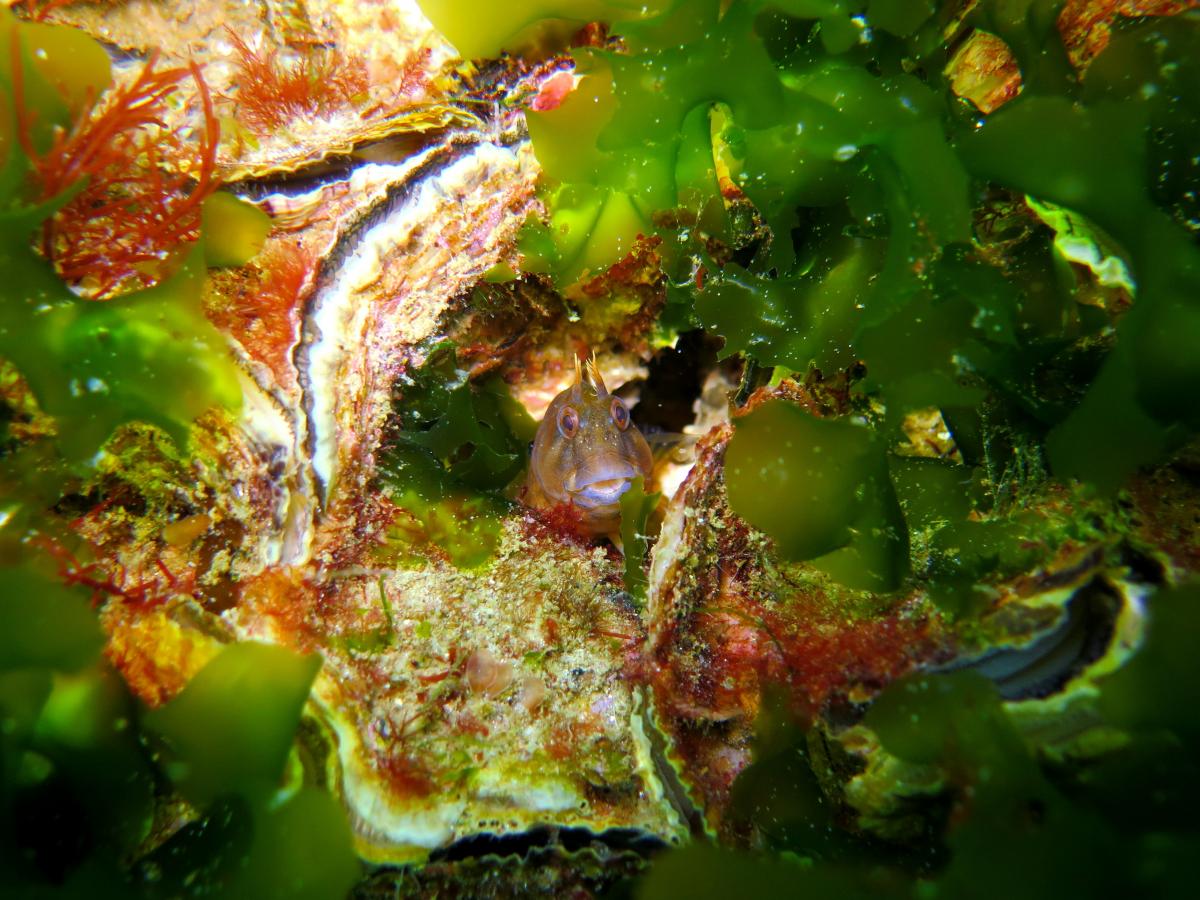
We know that the unfolding dual crises of climate change and biodiversity loss are interlinked and play out in a reinforcing relationnship - the worse one gets, the worse it is for the other. However this also means that improving one, can reduce stress on the other - an opportunity for smart decision making and design to get a win-win, when we so desperately need it.
Limitations of Net Zero Goals
With 'Net Zero' goals (reduction of carbon emissions to a net zero state for an organisation or area) on the rise as decision makers in Governments, Corporates, NGO's, Universities and Faith Organisations wake up to the need for action, we risk 'Carbon Tunnel Vision' (SEI, 2022) which focuses on emissions as the main threat, when in fact the challenges are multiple.
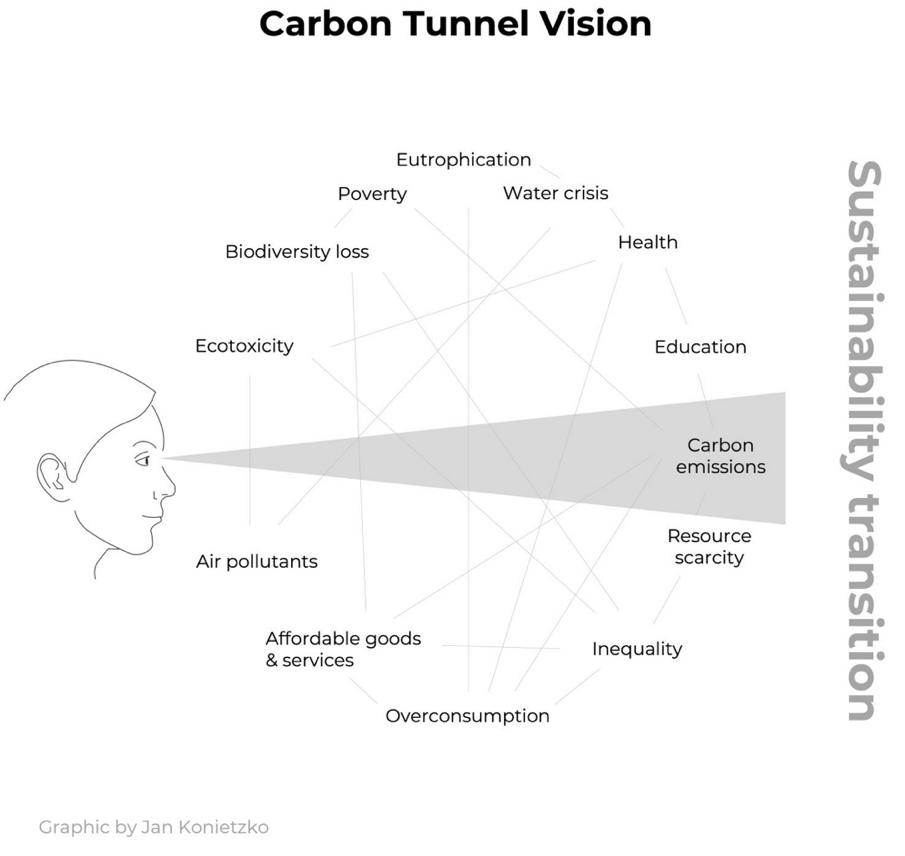
Indeed, we know that Planetary Boundaries are being pushed and blown through around the world (Stockholm Resilience Centre, 2015), so the risk of Net Zero is the seductive goal of just focusing on one thing, because that's what Reductionism has been pushing for the best part of 200 years. The situation is pretty bad here in Australia, as Climateworks recently showed us with their report 'Living within limits: Adapting the planetary boundaries to understand Australia’s contribution to planetary health' (2022):
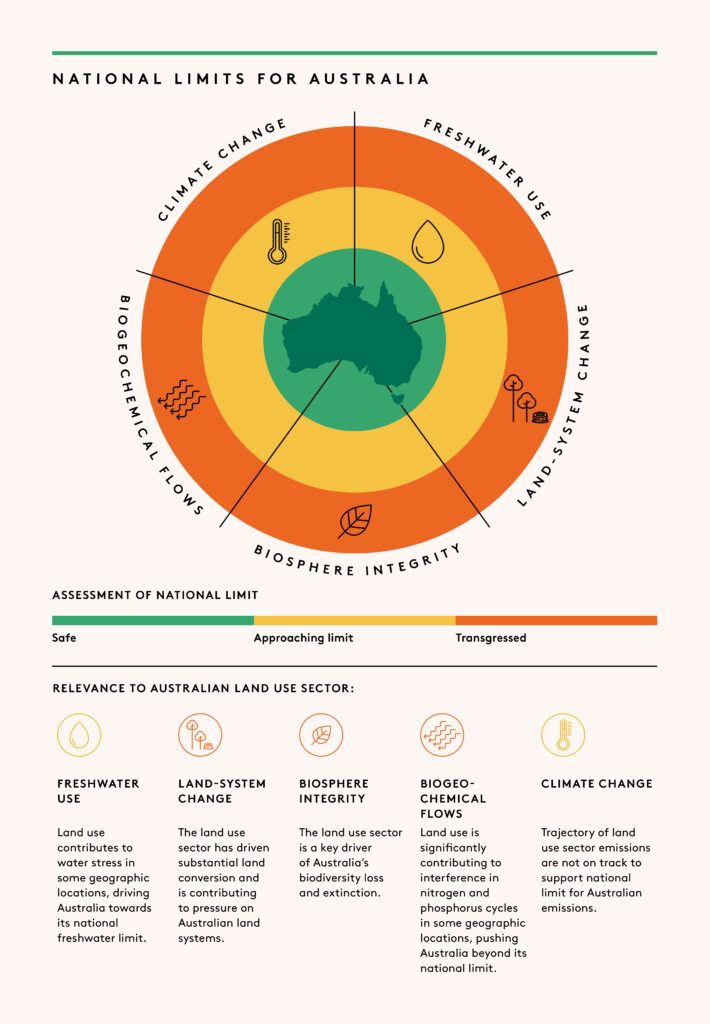
So instead of Net Zero projects having a focus solely on emissions, we need to ensure it's expanded to also recognise the interconnected factors and challenges, and engage in 'multisolving', as Beth Sawin calls it (you can watch her TEDx Talk here). Of course, this idea is old - indigenous people around the world have been stewarding their country for multispecies, for culture and for human health for aeons. Take Indigenous Cultural Burning here in Australia - there's multiple benefits from this approach, including cultural and physical kinship connections, ecological knowledge improvement, improving soil health, promote growth of native foods and flora, reduce fire intensity, Ceremonial and other benefits (Cavanagh, 2021).
Enter Nature-Based Solutions (again)
For too long, there's been a false binary narrative perpetuated about "environment" Vs "development", but recently there's been a resurgence in the discussion about sustainable development, especially integrating biodiversity back into urban environments. Circa-2015 the term 'Nature-based Solutions' (NbS) started to surface in Europe as a way of communicating the opportunity of working with nature's creation of multiple forms of value. Again this is not new - it's been known and practiced for a long time, but sometimes a new name can capture the zeitgeist and tip us to action and outcomes we need.
This 'multisolving' approach typifies NbS, and this post is a scan of examples and resources to highlight how we might approach climate action in a "No Net Zero without Nature" approach (Timmermans, Steiner and Dixson-Declève, 2021, Topping & Mohieldin, 2022 & Senter, 2022).
Nature-based solutions (NbS) are ways of working with nature for the benefit of both people and biodiversity. They involve a wide range of actions, including protecting existing ecosystems, restoring degraded landscapes, sustainably managing ecosystems and creating new ecosystems. NbS can deliver multiple benefits for society and nature simultaneously.
- Net Zero Climate, University of Oxford
Some Examples
This section doesn't aim to be exhaustive, but will share a few different examples to give a sample of how NbS is being talked about and practiced.
Naturvation - Europe
One of the most comprehensive NbS programs of action-research I've seen is 'NATure-based URban innoVATION', a 4-year project funded by the European Commission and involving 14 institutions across Europe in the fields of urban development, geography, innovation studies and economics. Their goal was to 'develop an understanding of what nature-based solutions can achieve in cities, examine how innovation can be fostered in this domain, and contribute to realising the potential of nature-based solutions for responding to urban sustainability challenges by working with communities and stakeholders.'
Naturvation is a goldmine of insights, tools and resources, including modelling tool, a worldwide atlas of NbS projects, and a MOOC course which I've dived into myself - and highly recommend for a grounding in NbS.
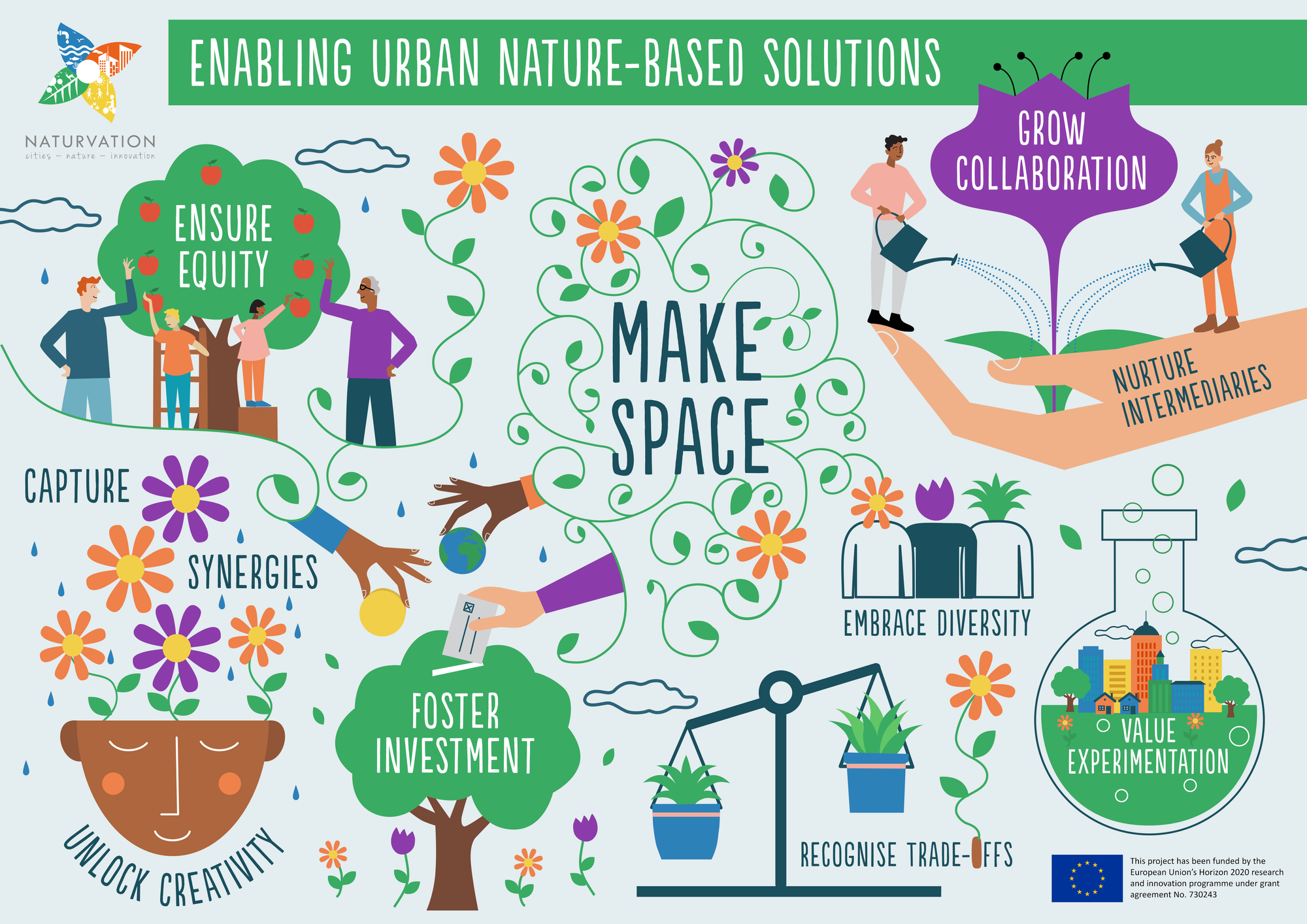
An example shared from Naturvation in the 'Making Urban Nature Bloom' book shows the design of a park to address stormwater run off, improve citizen wellbeing, and benefit biodiversity.
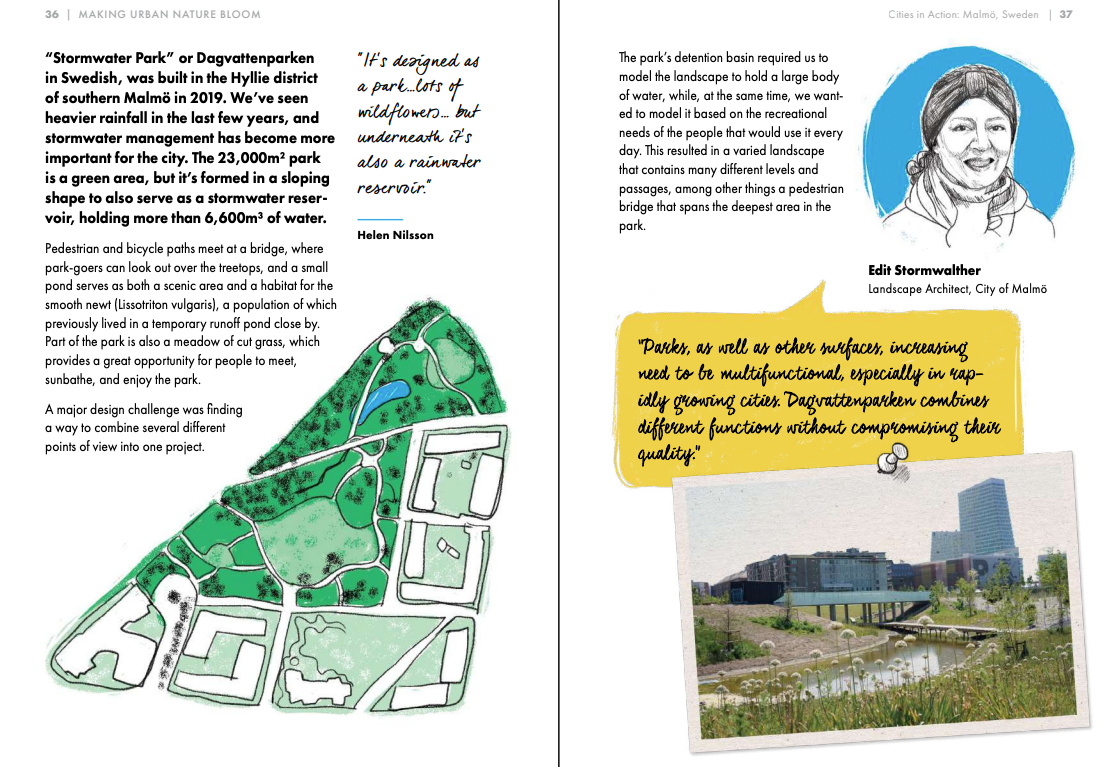
Trees As Infrastructure (TreesAI)
What would happen if we move from seeing urban trees as a liability to realising the plurality of benefits they create for the plurality of challenges we face? TreesAI from Dark Matter Labs & Climate-KIC is a great example of communication and open sharing of what this could look like.
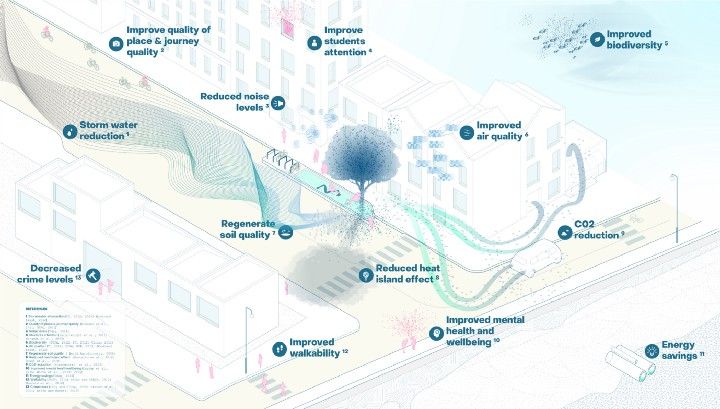
We know that achieving our increasingly higher climate mitigation and adaptation targets means learning to design and live in cities in radically different ways. It will require us to rethink the morphology of our streets, our consumption habits, our human development and economic growth principles, and our intimate relations with plants and animal species. Trees have existed before us and will continue to exist after we have gone. We have been cohabiting with trees for centuries, but at this moment we live alongside a highly processed urban forestry environment which has increasingly been ‘optimised’ to align with distorted economic and operational principles.
Read more about TreeAI in their first two provocation posts here:

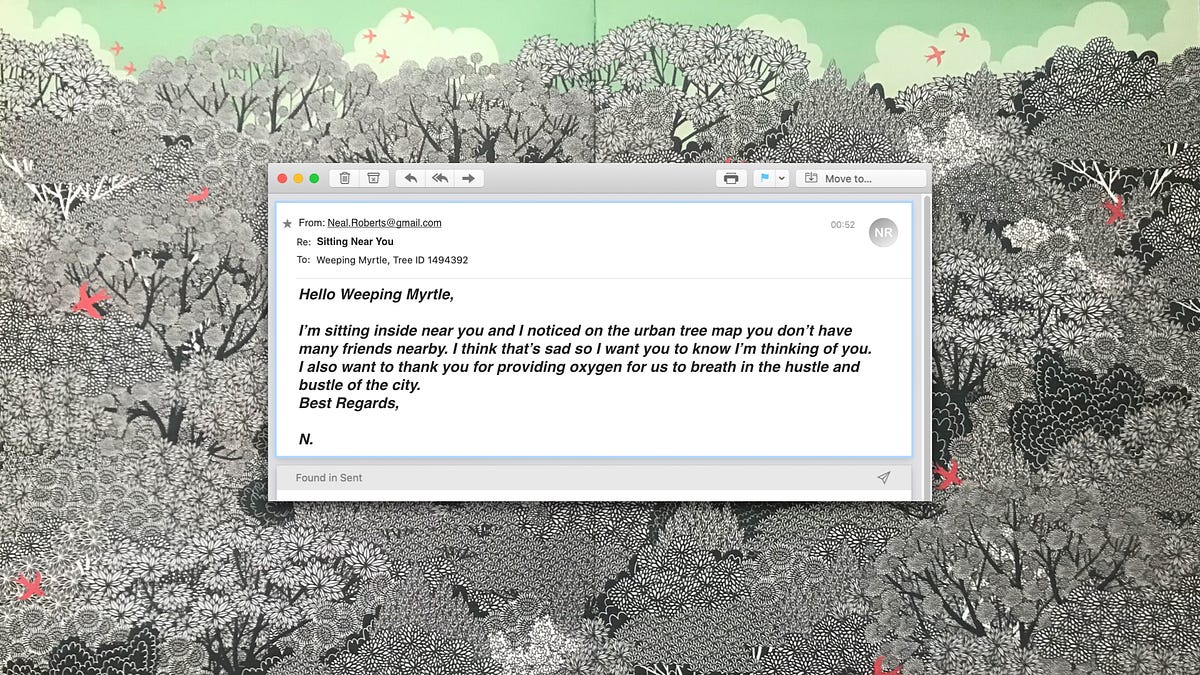
What I appreciate about TreesAI is that it addresses the full stack of operations, governance, evaluation, civic participation and technology - showcasing what a progressive nature-based solution program could look like.
The TreesAI team has their first pilot demonstration project locked in with Glasgow. You can find out more on their website:
The Super Wetland
Are NbS just 'urban sustainability' projects? Absolutely not, they're able to be developed and stewarded for a wide range of challenges and habitats. A great example is the recent announcement of 'The Super Wetland' in UK.
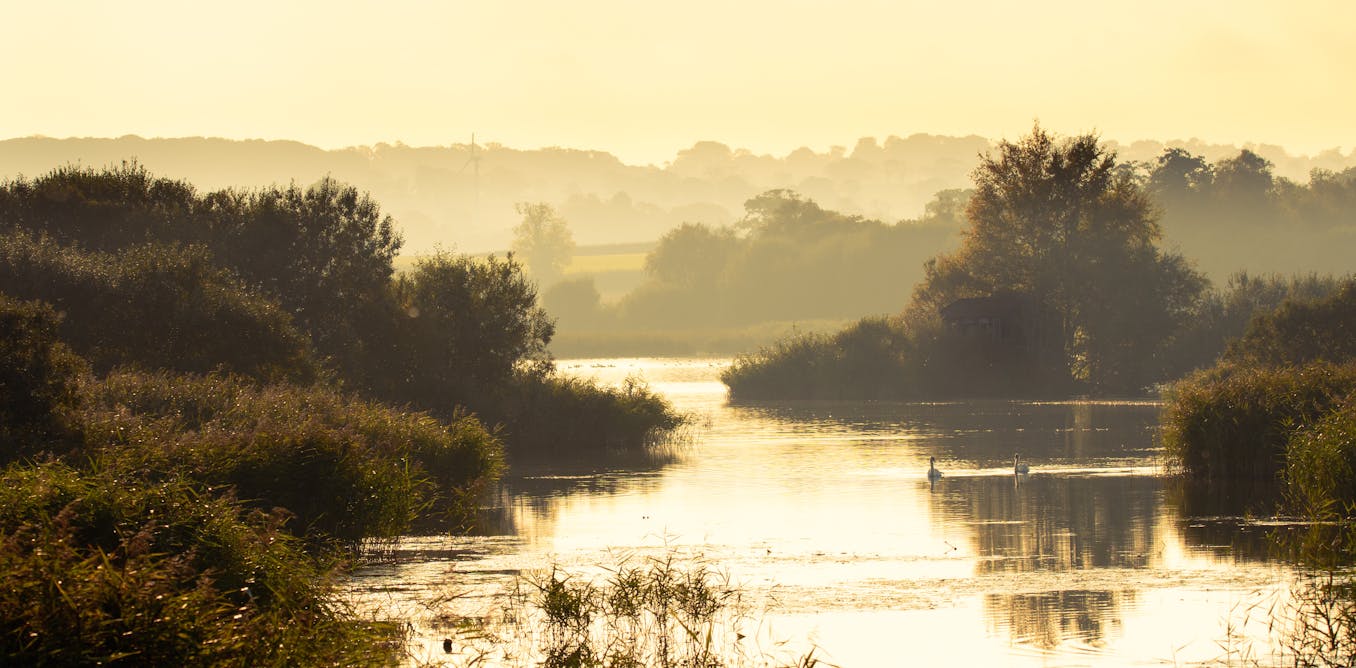
Whilst working for Conservation Volunteers Australia, we were developing a program focused on Wetlands as Blue & Teal Carbon environments which could be better protected and researched at the same time (with Blue Carbon Lab), so it was a delighted to see this happening at scale in the UK.
Properly managed individual nature reserves, no matter what the size, can be fantastic. But it’s when we join-up these pockets and expand them that we can really start to control waterflows, maximise biodiversity, reduce carbon emissions and enhance our own wellbeing. Indeed, research is showing it’s at this scale that we can have a real impact and harness the potential of “nature-based solutions” which allow natural ecosystems to help address the climate and biodiversity crisis.
- The Conversation, 2022
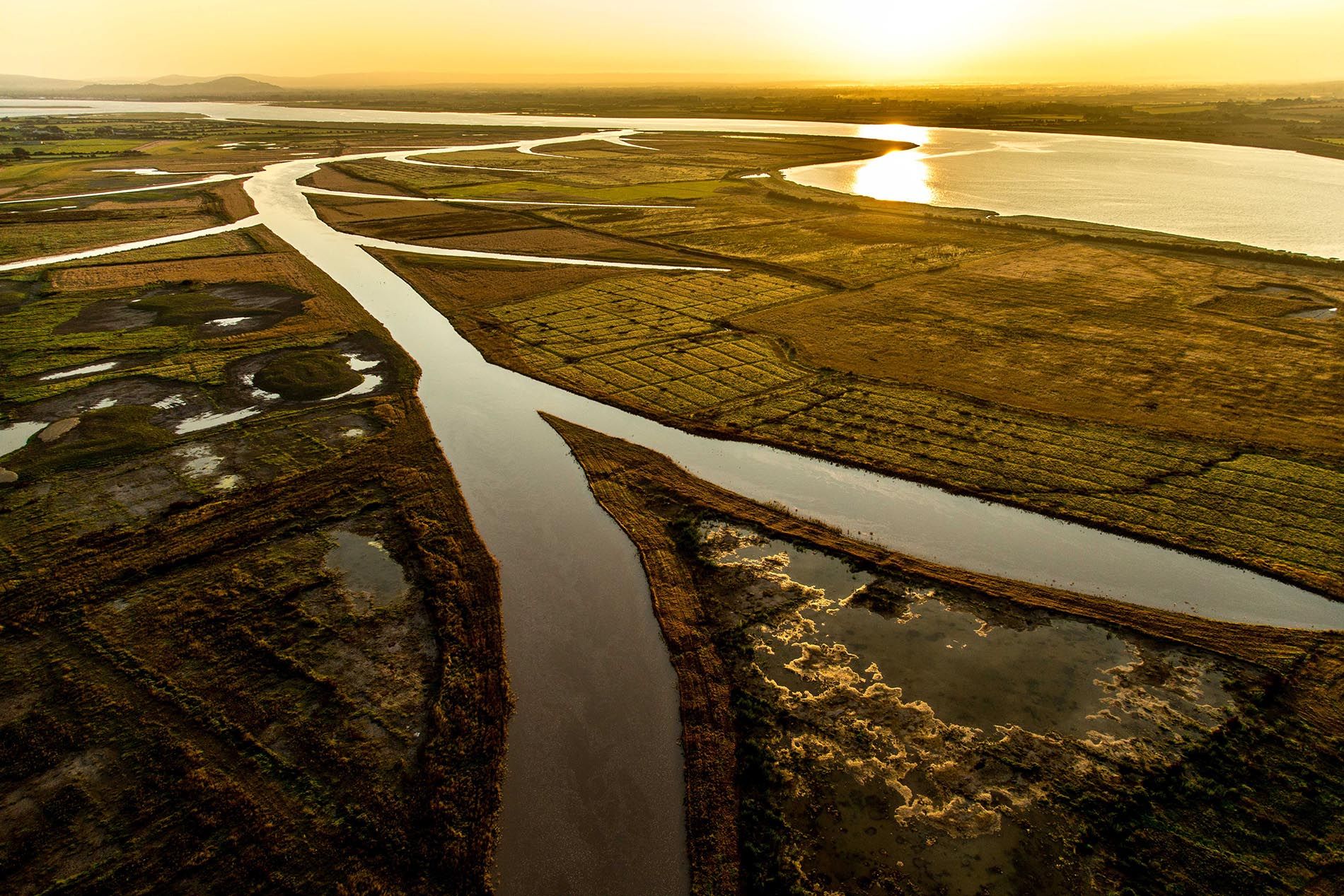
One of the reserves being absorbed into the 'Super Wetland' is the Steart Marshes, and the mixture of protection, recreation, community participation and research could mark it as a vital 'Living Lab' for climate change understanding:
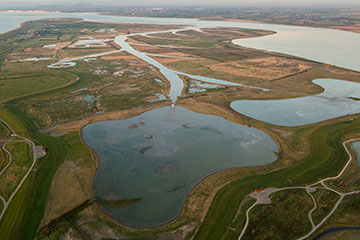
Taking Root
The CommuniTree Program (by Taking Root) works with smallholder farmers in Nicaragua to grow native trees alongside their existing farming practices. Their with the program is to mitigate climate change, increase and diversify smallholder farmers’ income, increase local species and biodiversity habitat, reduce future forest degradation by addressing drivers of forest degradation and deforestation, increase forest cover and water retention within the municipalities, and address gender inequity in forestry.
Find out more:
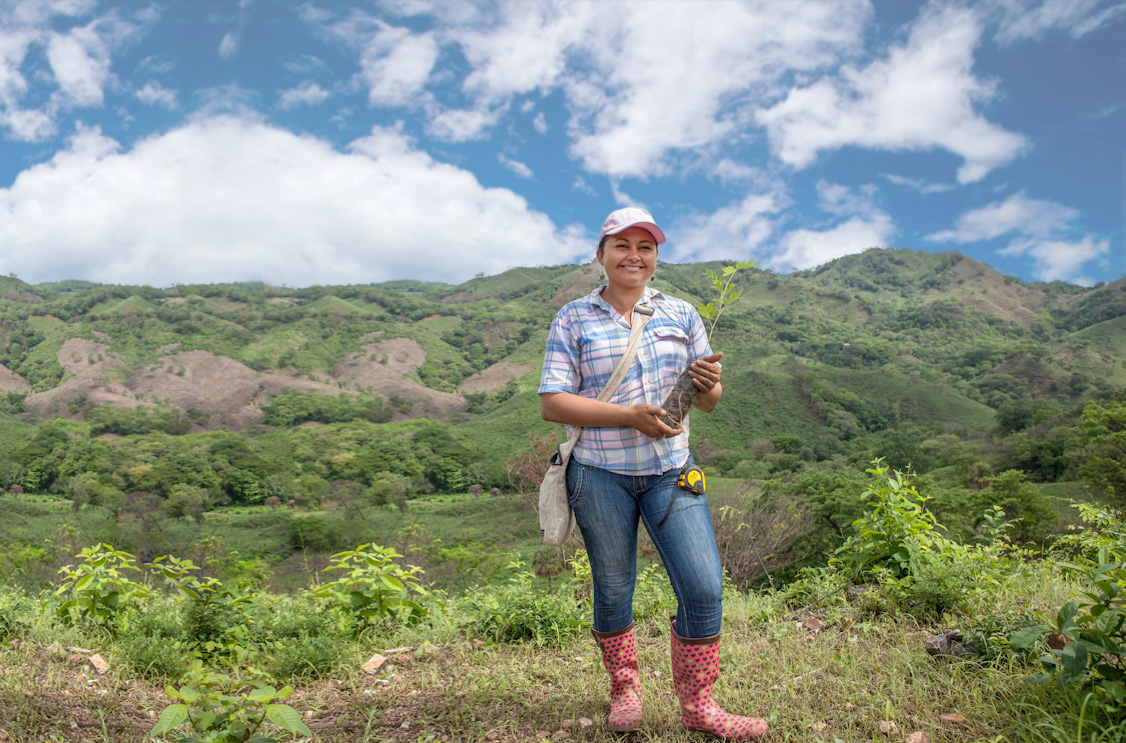
City of Kunshan
Another interesting urban project which adopts a NbS approach focused on coordinating integrated flood management at both the river basin and regional level, establishing a citywide urban drainage system for stormwater harvesting and flood mitigation, building a safe and resilient ecological infrastructure, and creating a beautiful and liveable sponge community.
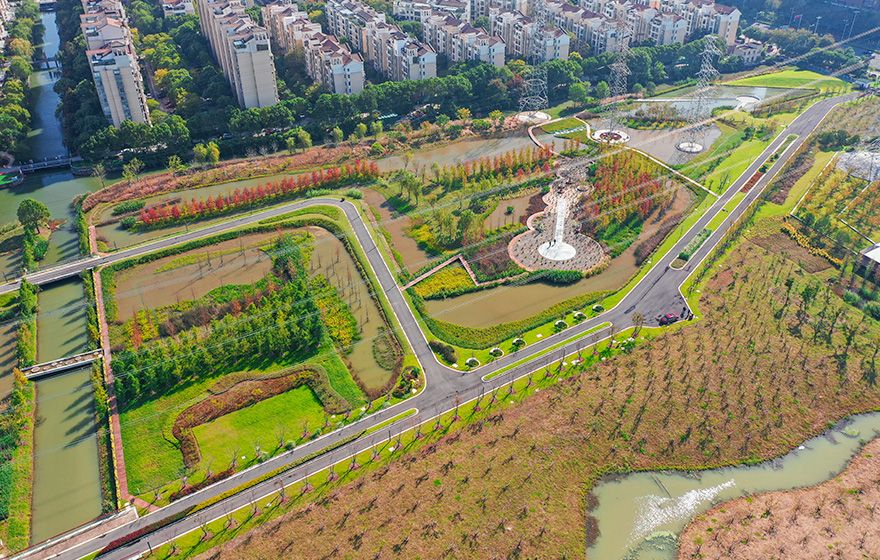
Bonus points for sponge metaphor.
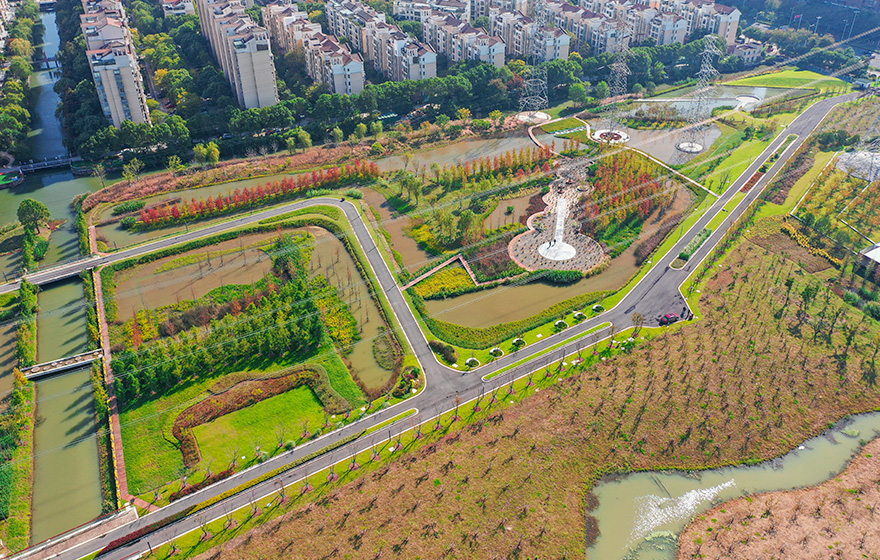
LIFE
Finally one of my friends, Kate Goodwin, alerted me to this interesting project she's just been involved in, in Leuven, Poland - creating a Participation Hub to create a replicable model for participatory development of NbS locally.
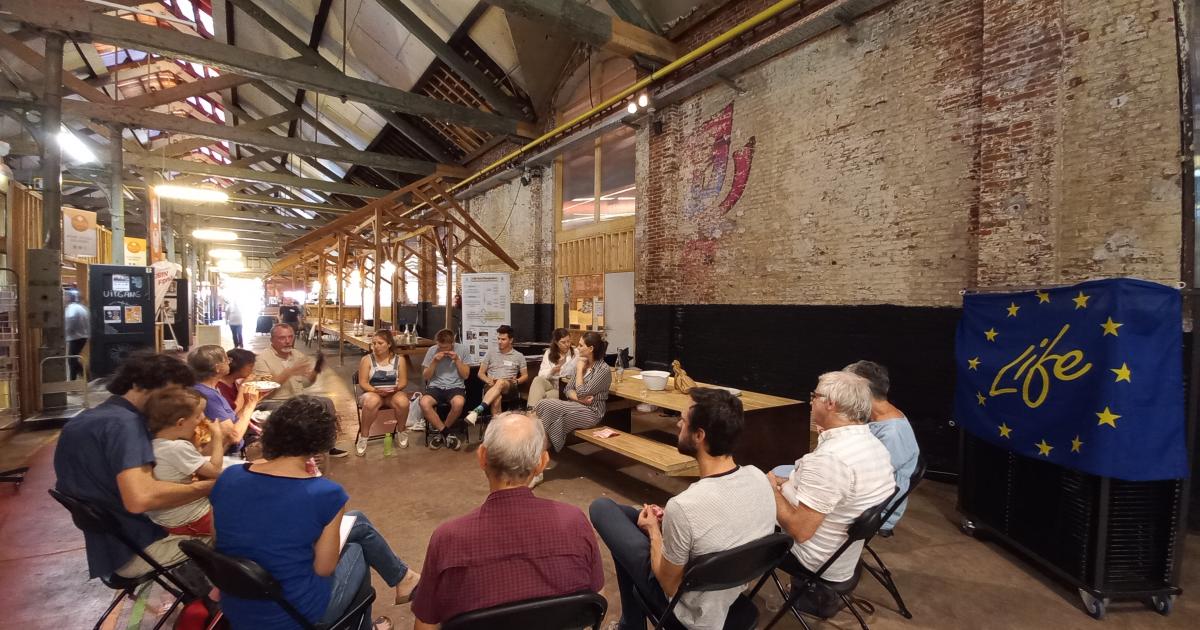
Against Silver Bullets
The narrative of finding a 'silver bullet' to tackle climate chnage and hold onto the status quo in the world is strong.
Let's be clear, Nature-based Solutions are not a silver bullet.
This is a useful article to delve into some of what needs to be addressed for NbS from The Royal Society (2020):

Many of these observations are increasingly backed up by research, although there remains a lack of scientific synthesis and there are several knowledge gaps, in particular around how the cost-effectiveness of NbS compares to alternatives (NbS Evidence). Here, we argue that instead of framing NbS as an alternative to engineered approaches, we should focus on finding synergies among different solutions.
Additionally some of the authors were involved in this 2019 publication which found
"there are ethical concerns to consider when providing economic incentives for NbS. These include the risk of land grabs, threats to land rights of local and indigenous peoples, and threats to local biodiversity. Authors conclude that Nature-based Solutions are promising, but careful planning and consideration is needed for effective implementation."

Learning forward
It's clear there's already been some useful developments in thinking about NbS as well as helpful critque. It feels like a useful framing with some interesting case studies - as I say perhaps just catching the zeitgeist, but hopefully it can stick and lead to further development. For that to happen, it's vital that more people understand and are trained in the development of NbS, as well as stories about these projects being shared and mainstreamed into existing structures of power and decision making.
Here's some links to get you started if your interest has been peaked:
Naturvation has got some great resources aimed at tackling the challenges of siloed, bit-part approaches to NbS:

Naturvation also played a role in making this MOOC happen:

Am SDG Academy MOOC about NbS in the context of disaster and climate resilience:

A complementary MOOC about shifting from sustainability to regeneration thinking:

UrbanByNature - a community of practice for urban nature-based solutions practitioners (HT Daniela Rizzi who is well worth following on Linkedin if you're interested in this space)















